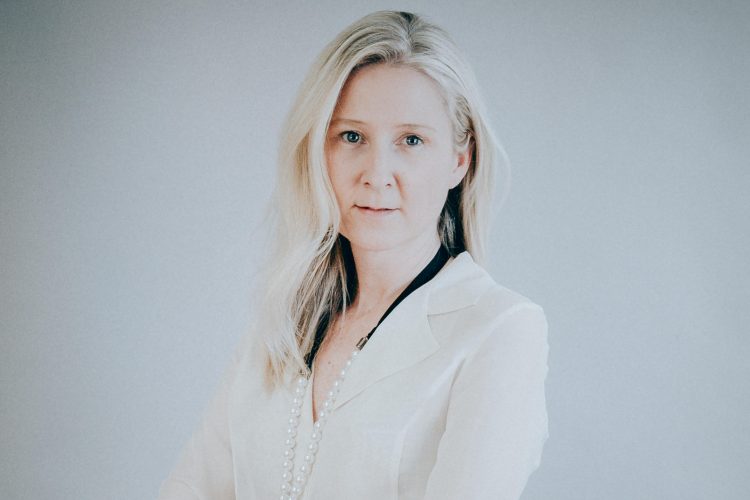«Setting the course on digital» : keynote de Sibylle Le Maire au Women’s Forum

Le digital révolutionne les marchés et les entreprises dans leur business modèles. Si nous considérons que l’information n’est pas un produit comme les autres, comment les groupes média, et ceux print native, envisagent leur mutation dans cette nouvelle vague ? C’est le keynote que Sibylle Le Maire, Directrice Générale Bayard Média Développement, a partagé au Women’s Forum hier : mise en perspective des enjeux d’un groupe de presse, et présentation des évolutions du Groupe Bayard. La transformation qui s’est opérée est en marche et va s’amplifier : des process repensés, des technologies choisies, et des collaborateurs en mouvement au coeur de la dynamique. Avec deux mots-clés pour leitmotiv : co-construction et optimisme.
Lire l’intégralité du keynote en Anglais :
Good afternoon,
First, I’d like to thank you all for coming.
I’m very pleased to be back at the Women’s Forum again this afternoon. I’m going to say a few words about the challenges of digital transformation.
Over 200 million views, third ranking on YouTube, he is 42 and it is a bear. His name is: Petit Ours Brun. A Bayard character. That is what digital can do. The question is how?
Let me tell.
First, we know we are all affected by digital transformation.
But, if we consider the barometer of Russel Reynolds Associates published by the Harvard Business Review, we discover that the sectors most affected by the digital revolution are the media, the telecommunications sector and banking.
The media, especially newspapers and magazines, have experienced a constant and critical drop in sales for almost thirty years now. So it’s not surprising if the media sector is often mentioned when we discuss digital transformation.
We start to imagine that it’s the end of the press, or at least the end of the printed press, which is outdated and threatened on all sides by the digital revolution, which it wasn’t prepared for. There are even websites devoted to the subject, which has a name, Newspaper Death Watch.
However, the media has shown tremendous resistence to this phenomenon.
It has learnt to adapt – even if it has gone too far at times – and reinvent itself in an everchanging world where it has become impossible to predict the next chapter.
We are not blind. The GAFA companies – Google, Amazon, Facebook and Apple – and their Chinese counterparts, Baidu, Alibaba, Tencent et Xioami, have acquired a considerable amount of power in the business world. Few people have even heard of Tencent, which is now the tenth biggest company in the world with one billion users going there 40 times per day (wechat). As I said, we are not blind.
In France, according to the figures provided by IREP (the institute for research and advertising studies), the 2016 net turnover from media advertising was 13.3 billion euros.
In the ten years prior to this, the five traditional sectors – TV, radio, press, cinema and poster campaigns – made a loss of two billion euros, including one billion in the final year alone. Actually this was not a loss, but rather a transfer to the GAFA, who are growing faster than the sector itself.
Faced with such a phenomenon, we need to sit down and take the time to think. We must avoid the temptation to ignore the facts or simply be pessimistic. We need to accept the pressure from the outside, but also realize that the digital sector will not completely take over. We are being asked to think differently.
« Building the first aqueduct was huge progress for Rome. But in a city where a quarter of the population worked as water carriers, its unlucky architect was subject to the people’s anger». This story is a good example of the paradox in digital transformation, namely « creative destruction », which provides an enormous challenge for big companies.
So let me tell you what we understood at Bayard.
Why are we still kicking? We are still kicking because we understand that this shift redefines the bond with the consumer. In the past, it was expensive to create a bond, but today this is no longer the case.
It redefines the company’s value.
Today, the important thing is no longer your past and your market share – it’s what your future competition will be. It redefines the value chain. Today, digital technology is a growth factor which offers amazing possibilities to media companies, even if they have suffered from the disruptions caused by this technology.
I will emphasis only 4 of these disruptions created by consumers:
1.Information-obesity: today we consume seven times more information than in 2004.
2. The standardization of formats: the predominance of « social platforms » and mobile Internet has encouraged formats to become standardized. Facebook has replaced Google as the main source of traffic for many media. But Facebook has taken things a step further and now behaves like a media company in is own right. An hybrid editorial team, part-human and part-algorithm, has come into existence.
3. « The risk of editorial burn-out». During the press conference that followed Emmanuel Macron’s speech at the United Nations, the French President declared: « The French media are too interested in communicating and not interested enough in content. I intend to explain to the media what I mean by that. When I see the time that has been devoted over the past four months to commenting only on what I said or didn’t say, I have the impression that the system is becoming completely self-obsessed. »
4. The question of credibility: The media is a powerful tool when placed in the hands of unscrupulous individuals who care little about the facts. Studies show that 80% of people who share fake news know that it’s fake. They say, « Yes, okay, but it’s fun to share fake news ». Donald Trump has fully understood how this works: you post information that is remotely connected to the truth, but which is so outrageous that it’s sure to be shared more than the true facts. Today, when students learn how to check a piece of information on Internet, they learn that it’s more important to check the source than the information itself.
Although digital technology started a revolution more than thirty years ago, it’s only today that we are experiencing a new system of values.
Information and expertise are everywhere and no longer in the hands of a privileged few.
In fact, horizontal ways of functioning now take precedence over vertical methods; collective and inclusive means of functioning have replaced individual and exclusive ones. And it’s important not to reduce the transformation we have lived through, and that we are continuing to live through today, simply to a transformation of formats. It means a lot more than that, and has a much wider and deeper impact because the real issue is about being together, living together and consuming together.
So, where does Bayard come in in all of that? How are we still kicking?
Bayard was founded in 1871, at the time when railroad fever was taking hold of Europe at the speed at which Internet is growing today. The company has lived through all the industrial revolutions which have taken place until now. The group has remained independent.
In figures, Bayard has a turnover of almost 400 million euros, 36 million readers and 4 million subscribers. One child out of two reads our magazines and 30% of the group’s revenue is from international activities.
Bayard is a healthy small company, but it remains a small company.
The group faces two challenges: basing its future development on becoming an international and digital player while being acutely aware that the competition is hitting harder and harder. Initially, when digital transformation was first mentioned in Bayard, we imagined that it was a matter of being fitted out with digital tools, but we soon realized that these tools are merely a means and not an end. This revolution we are experiencing is a human revolution – it’s about the individual.
And let me tell you It’s a difficult process for a group whose dedicated and long-time collaborators are attached to printed matter.
People need to understand in what ways digital technology transforms their value chain and their jobs. So how do we go about it? A company doesn’t become innovative overnight. It’s not just a matter of taking the decision.
It won’t happen simply by asking people to be innovative. Innovation is something that needs to be built and organized. You need a plan. So let me tell you what we put in place.
At Bayard we first advanced little by little, starting with Bayard University a few years ago. The « university » is a privileged space where experiences, knowledge and competence can be exchanged within the group. It’s a space for passing on and renewing our corporate culture, but also a space that looks outside its walls and invites researchers, writers, politicians, artists and philosophers in order to emphasize our common interest in sharing knowledge and ideas. It’s a space open to all Bayard employees, as we are convinced of the value of collective intelligence and the ability of each individual to cooperate, grow and be enriched.
This year we decided to take a step further through an incubating program. Why? Because we are convinced that we must go beyond progressive innovation alone in order to be a more disruptive player. So what did we learn so far? First we learnt to think differently and ask ourselves questions. What is our meaning? Why are we together? What is the company’s value proposition? Which vision do we share? What problem in society do we want to resolve? We learnt that moving into a more complex world where complex thinking cannot be the responsibility of one single person.
We are rediscovering the strength of collective endeavor. We are moving into an uncertain world where there is no ready-made economic model and no familiar landmarks. They make us think about the essence of the company. They help us to know and identify our base. These initiatives force us to make choices: the choice of our content, the choice of the information we provide. If we are to cross this zone of turbulence and survive as an ambitious and independent press company, we need to understand who we are, and which kind of journalism we stand for.
Once these conditions are united, it’s possible to become a player on other platforms without betraying your identity or ruining your credibility with your public. One example: our cooperation with You Tube and one of our character Petit Ours Brun (Little Brown Bear). It did not really start as cooperation since they hacked us. But we soon realized the power of distribution of the platform and the possibility it gave us to access new readers and new customers. Thanks to the platform, we reached 200 million views on YouTube. Thanks to these platforms, we realized that we have plenty scope for growth. We learnt this requires time and energy, the risk is to want to go too fast.
It’s essential to learn how to:
– shake up your management to create transparent and transversal managers – give meaning and responsibility
– free up initiatives and give time (for example : the people involved in the incubating program are fully dedicated on it and are not working on daily tasks)
– have faith in responsibility: it’s why, not how, that counts Be optimistic: “If plan A doesn’t work, there are plenty letters left in the alphabet » It’s okay to make mistakes: « In the end, there are those who tried and the rest ». So, yes, the cultural revolution must take place. Digital technology has forced us indeed to rethink our management and question our working methods and procedures.
In other words, to be humble and pragmatic. Digital technology has inversed our value proposition. We have understood that in the digital era the value takes another dimension, taking into account the reader’s experience, the relationship and exchanges with the reader, and the service we provide.
Content is everywhere. Accepting this fact means accepting to question the economic model we have inherited from the twentieth century. Our value lies in the relationship we form with our public, in how we treat our content editorially, in the commitment we give to our content.
Our models are ecosystems, which we must open up to the outside. We no longer have the monopoly on expert knowledge, but on the other hand « together, we can go further », to quote an African proverb.
We also rethink our progress in co-building mode with our service providers, our B2C and B2B customers and even our competition. In can take different forms. Let’ me give one example : Hackaton / design thinking/ excubation helped us to re-think our editorial offer to teenagers. How do you inform 15 to 18 years old today? It cannot be a paper offer only anymore. We involved a coding school, teens and editorial teams. We came out with an app called “give me 5”: 5 short information at 5 o’clock every day. Small texts, videos and short information. The result: 100 000 subscribers in 4 months and one out of two of them goes everyday on the app.
To conclude, If we need to call the homogeneity of today’s world into question, we also need diversity more than ever as it is the best possible outcome of this revolution.
Women have a role to play in this revolution. Consider this amazing statistic: six jobs out of every ten that will exist in 2030 don’t exist yet.
It’s our role to invent them.
To finish off, digital transformation isn’t a story with an ending. The period we are experiencing is fascinating, but scary. Some people have doubts while others are euphoric. We need to put our fears behind us and act. We must dare to decide to break with the past.
Oussama Ammar, co-founder of The Family, puts this very well: « To sum up, when a tsunami hits you, you don’t take time to think, then ask « Is this logical ?» ». Well, it’s the same for digital transformation! And let’s do it together! Thank you!
Sibylle Le Maire, Directrice Générale Bayard Média Développement,

À lire plus tard
Vous devez être inscrit pour ajouter cet article à votre liste de lecture
S'inscrire Déjà inscrit ? Connectez-vous








